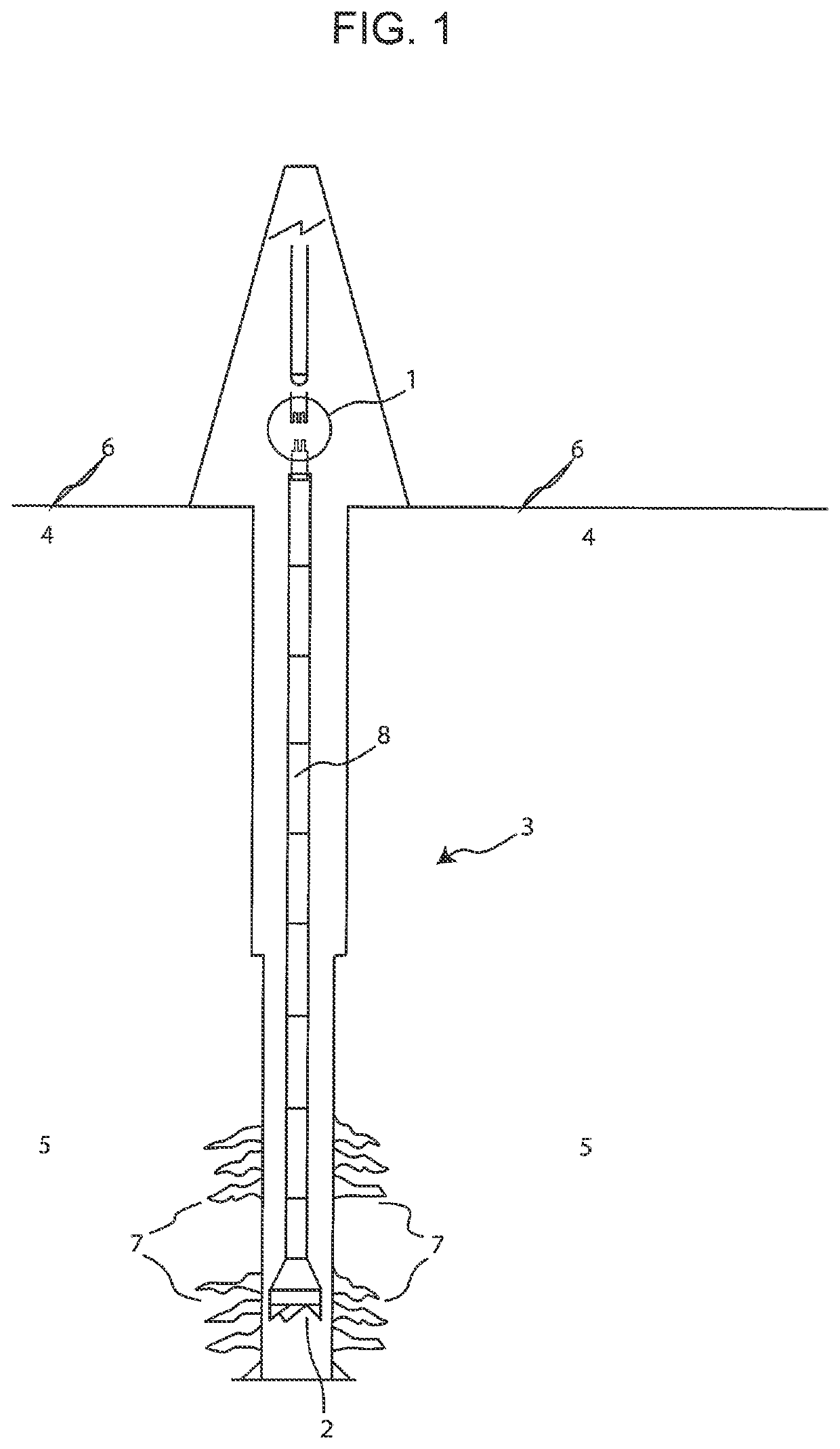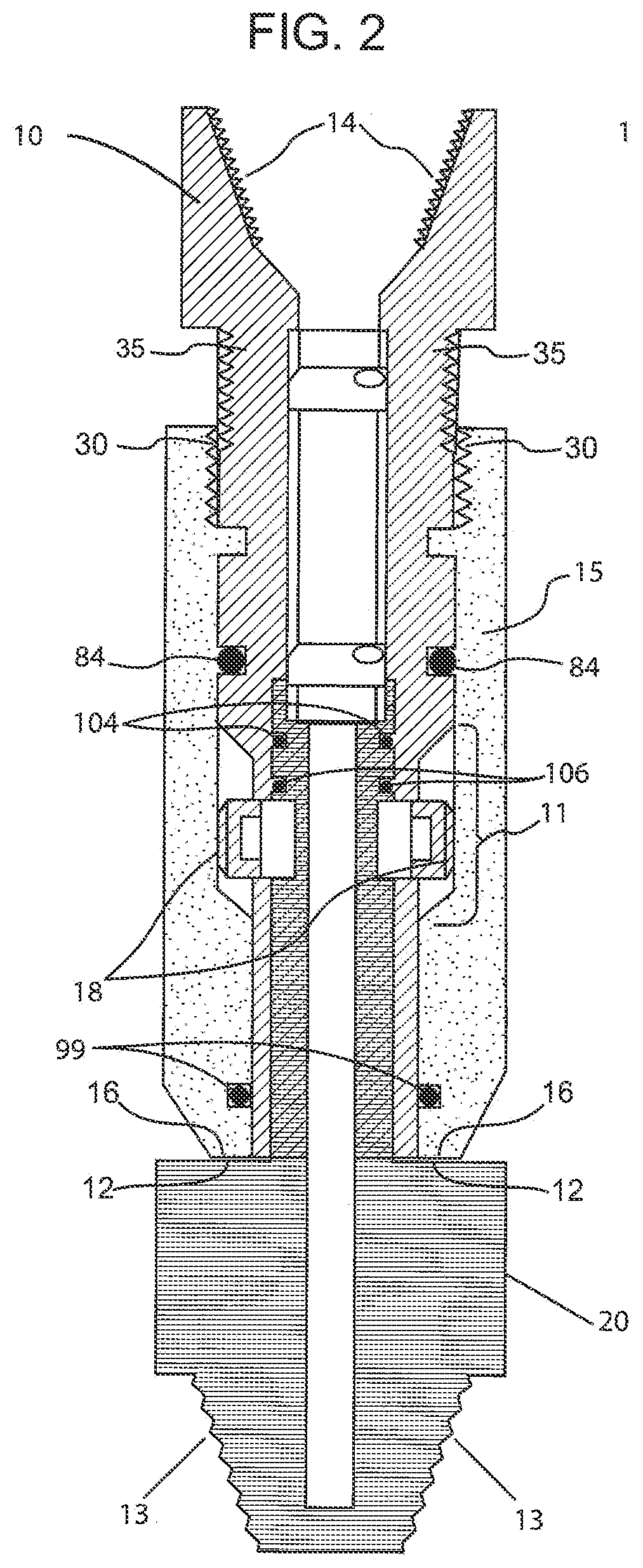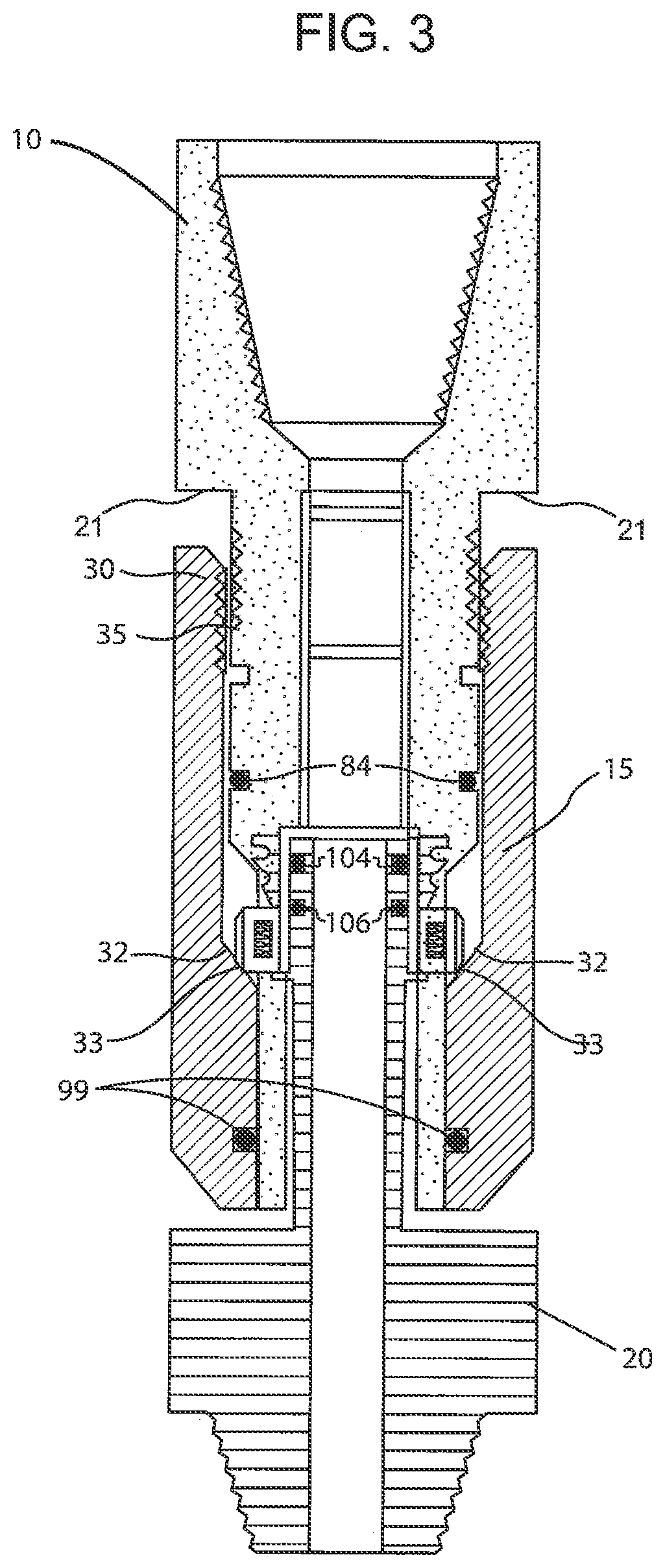Manual pipe valve connector for jointed pipe connections with quick release check valve assembly and uses thereof
a technology of quick release and check valve, which is applied in the direction of drilling pipes, screw threaded joints, mechanical equipment, etc., can solve the problems of dangerous tools and techniques, high cost of systems, and other tools such as manual rig tongs, which are known to be extremely dangerous, and achieves convenient servicing and replacement of valves. , the effect of convenient and efficient makeup and breakout of connections
- Summary
- Abstract
- Description
- Claims
- Application Information
AI Technical Summary
Benefits of technology
Problems solved by technology
Method used
Image
Examples
Embodiment Construction
[0051]Advantages of the present invention will become readily apparent to those skilled in the art from the following detailed description, wherein there is described in detail certain preferred embodiments of the present invention (and examples for illustrative purposes). Although the following detailed description contains many specific features for the purposes of illustration, one of ordinary skill in the art will appreciate that many variations and alterations to the following details are within the scope of the invention. Accordingly, the following embodiments of the invention are set forth without any loss of generality to, and without imposing limitations upon, the claimed invention. While embodiments are described in connection with the specification herein, there is no intent to limit the scope to the embodiments disclosed below. On the contrary, the intent is to cover all alternatives, modifications, and equivalents.
[0052]FIG. 1 illustrates the present invention that is t...
PUM
 Login to View More
Login to View More Abstract
Description
Claims
Application Information
 Login to View More
Login to View More - R&D
- Intellectual Property
- Life Sciences
- Materials
- Tech Scout
- Unparalleled Data Quality
- Higher Quality Content
- 60% Fewer Hallucinations
Browse by: Latest US Patents, China's latest patents, Technical Efficacy Thesaurus, Application Domain, Technology Topic, Popular Technical Reports.
© 2025 PatSnap. All rights reserved.Legal|Privacy policy|Modern Slavery Act Transparency Statement|Sitemap|About US| Contact US: help@patsnap.com



